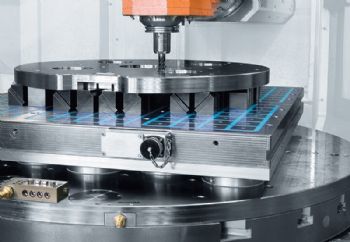
The latest magnetic clamping technology from Sheffield-based WNT (UK) Ltd (
www.wnt.com) is system-neutral, allowing it to be used on all conventional machining centres.
It allows the fast location and clamping of components, which can be machined on five sides in one set-up. For even greater component access, the system can be complemented with three-point fixed-pole extensions.
The magnetic force from the clamping plate is transferred through the poles to help maximise the clamping force. In addition, pole extensions with axial compensation allow the clamping of rough, uneven and un-machined surfaces.
WNT magnetic chucks are operated at the push of a button, with power supplied and grip activated within seconds. For reassurance, the system status, which is not power-dependent, is displayed so that the operator can see at a glance whether the magnetic chuck is activated.
The company has also extended and further developed its pneumatic zero-point clamping system, which offers process security thanks to a precise short-taper centring and self-locking mechanism. This guarantees a repeatability of better than 0.005mm, says WNT.
In operation, the clamping slides are first closed by spring force, locking the clamping bolt via 15deg angled surfaces; the application of compressed air then increases the clamping force by up to 300% (WNT says the resulting 25kN clamping force allows the use of higher cutting data).
Once the mechanical locking system engages via the spring assembly, it is self-locking and form-fitting, so the air supply is not required during machining.
To release the clamping pressure, compressed air at 6 bar is sufficient to open the clamping modules.